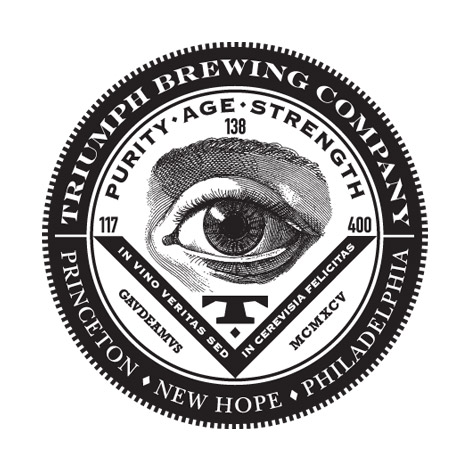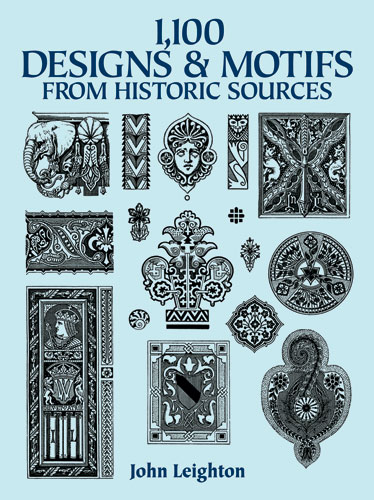
Tom Smith is a graphic designer whose work I have long admired. His work has a strong and recognizable vintage aesthetic. For me, he consistently hits the bull’s eye with lettering and imagery. On the flip side of his vintage-inspired designs, Tom also works within a super pared down clean edge style as well, which makes strolling through his personal artwork enticing at every turn.
I love comparing notes with Tom about my work as an archivist, the resources he uses as a designer, and vintage-inspired images we are carrying on our iPhones on any given day.
www.tomsmithartwork.tumblr.com
Q and A with Tom Smith
Janine St. Germain: Tom, you know I am inspired by speaking to people who use various forms of archival holdings in their work, and your designs immediately came to mind… Can you tell me what were the earliest resources you used for your graphic designs?
Before using material available now on line, I often used images from the Dover Books Series – which are dedicated to specific subjects and themes; transportation, men, women, music, etc. In the early days we would photocopy or, eventually, scan images from books like these, and use these images as resource material for design work. They’ve always been a great source – and it’s free, that is, in the public domain.
JSTG: What drew you to using this style, the vintage engraving?
Well, I think it was from growing up around my house. My mother and father were always making things. We have this thread of Civil War history running in my family. My great, great uncle fought in the Civil War. We had artifacts in the house — my father was always collecting things from the family and framing them. So I guess I was always interested in these historical items. Later, in college, one of my teachers, Marvin Goldstein, used a silkscreen engraving of an onion in his artwork. I wondered, “Why exactly would you do that?” And I think that set off my fascination with engravings.
But I think a big part of it, was my family history.
My great, great uncle’s Civil War diaries, a photograph of those five brothers from the late 1800s – all this stuff hung in the house – my parents were also into collecting and restoring antiques. My dad designed manufacturing systems for Singer (Sewing Machines).
There were mechanical drawings around the house, as well as the instruments he used to make these drawings. I still have his tools — his brush to dust off drawings, his triangles and French curves.
Also, my great grandfather was in the printing business…
 Family heritage seems to have played a strong role – my grandmother, who was a very hip lady – kept a perfect house. I remember she had framed pictures of Lincoln, and Washington. Also my uncle kept a collection of antique guns, and restored antique cars. Collecting and restoring was something that was a shared interest in the family.
Family heritage seems to have played a strong role – my grandmother, who was a very hip lady – kept a perfect house. I remember she had framed pictures of Lincoln, and Washington. Also my uncle kept a collection of antique guns, and restored antique cars. Collecting and restoring was something that was a shared interest in the family.
Another thing that made an impression on me from an early age was a framed piece that hung in my parent’s dining room. My great grandmother’s family owned a flour mill, one of the bags is framed and hangs at my parent’s house. It’s so beautiful. The type, and the color – it’s just a gorgeous piece.
My dad’s drafting table made an impression on me, the inks, and drawing set, his compass – I still have all of that and occasionally use them…
Now, in Adobe Illustrator, you just click and the program asks how big you want to make a circle. Compared to drawing with a compass, which can take a half an hour to render a perfect circle in ink. Or, when you manually drew a straight line with a rapidograph, you would need to draw it out further than you needed it to go, and then use an exacto knife to trim the end of the line. All of this was extremely time consuming.
JSTG: Can you share some of the archival collections that inspire your work?
[Tom and I both love working with vintage image collections – here are just a few resources we rattled off in the course of our conversation]
Historic Houses Trust of New South Wales/Sydney Police Photographs 1920-1950
JSTG: Tom, if you could have open access to any archival collection you wanted to draw from for inspiration, what collection would you like to work with?
I think I would choose the archives of Charles and Ray Eames, as well as the archives of designer Paul Rand. I’ve always admired Rand for his clean, minimal corporate designs, as well as his clever and jolly kids’ books and liquor ad designs. I think I have some of that in me. The ability (and need) to do both kinds of work — clean, minimal and illustrative.
[Edited and condensed for clarity]
www.tomsmithartwork.tumblr.com





Congratulations, Janine!
Brilliant article.
Perfect!
Much cheer!
Mary Olson